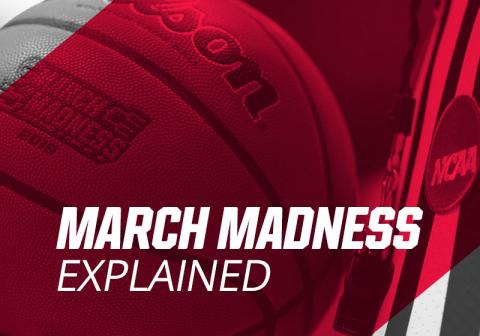
If you have been feeling a little electricity in the air lately, it’s probably because the most exciting sports tournament of the year is right around the corner. The 2019 NCAA Men’s Basketball tournament kicks off the weekend of March 17th with selection Sunday, followed by the First Four tournament. Three white-knuckle weeks of college basketball action follow before a champion is crowned in Minneapolis, MN on April 8th.
Betmania will have info on all the matchups and provide you with the latest NCAA college basketball betting odds so that you can make a winning wager, so register with us today and get ready to make a winning wager!
So how exactly are the teams chosen for the tournament? What does a team have to do to get the #1 seed? We have all the answers to your questions here at Betmania!
Teams enter the tournament in two ways: an automatic berth or an at-large berth. Automatic Berths are given to teams that win their conference championship. 32 conferences qualify for NCAA tournament berths, so one team from each conference is awarded an automatic berth.
At-large berths are more complicated; to qualify for one, a college needs to be chosen by the NCAA selection committee, which is made up of administrators from different schools who have served five-year terms and are representative of a cross-section of D1 memberships. These administrators are trusted with making the fairest bracket possible by including the best teams from each conference who did not finish first during the regular season.
This year the selection committee will be using a new tool call the NET (NCAA Evaluation Tool) to evaluate better what teams deserve a seed and where they should rank in their region (more on regions later). This new tool analyzes data like scoring margins, the strength of schedule, offensive efficiency, and distance traveled for road games in order to put together a complete picture of how well a team performed in a given year.
Once a team is selected by the committee to participate in the tournament, they are then put into one of the four regional brackets: East, West, South, and Midwest. There are 16 teams per region, and each region plays four single elimination rounds to decide a regional champion. The bracket is set up so that the No 1 seed in each region plays the No 16 seed. The 2 seed plays the 15 seed, and so on. That way, the higher seeds have easier matchups at first and thus have a better chance of advancing.
To start, the four lowest at large seeds play a mini-tournament called the “First Four” against the four lowest automatic bids. Once those four games have ended, the winning teams move into the 64 teams NCAA Tournament Bracket.
As the tournament plays on, each round sees the field shrink by half. Sixty-four teams turn into 32 for round two, then round three which is dubbed ‘the sweet sixteen’ narrows down to the ‘great eight’ who in turn decide the Final Four.
Because the bracket is single elimination, it increased the chance of a low seeded team advancing into the later rounds of the tournament through a series of upsets. Last year, 11th ranked Loyola of Chicago made it all the way to the Final Four after defeating #6 Miami, #3 Tennessee, #7 Nevada and #9 Kansas State before falling to #3 Michigan in the semifinal.
What will happen this year? With a tight field of top teams vying for a championship, it is impossible to tell at this point who will have their hearts broken and who will walk away with a championship. But that is all part of why we tune in and watch!